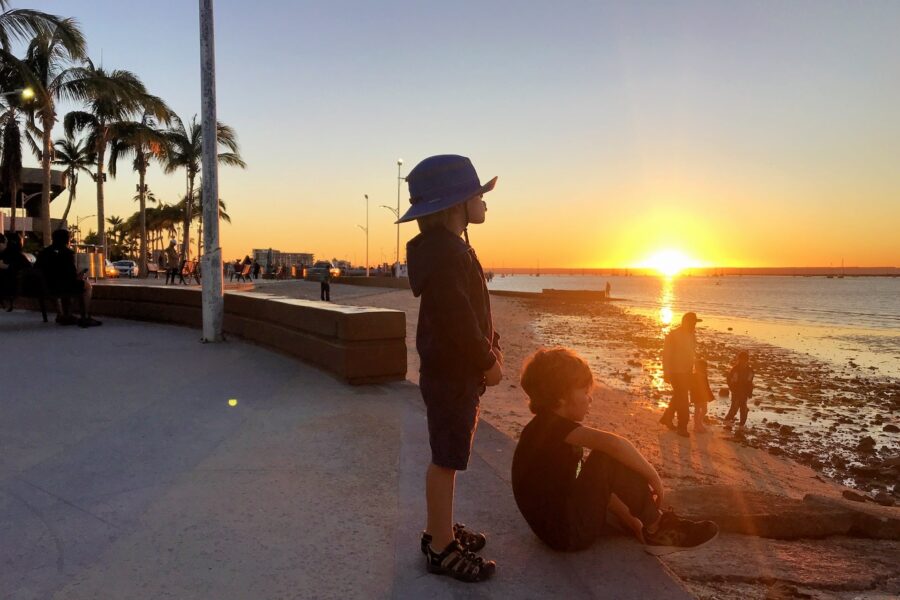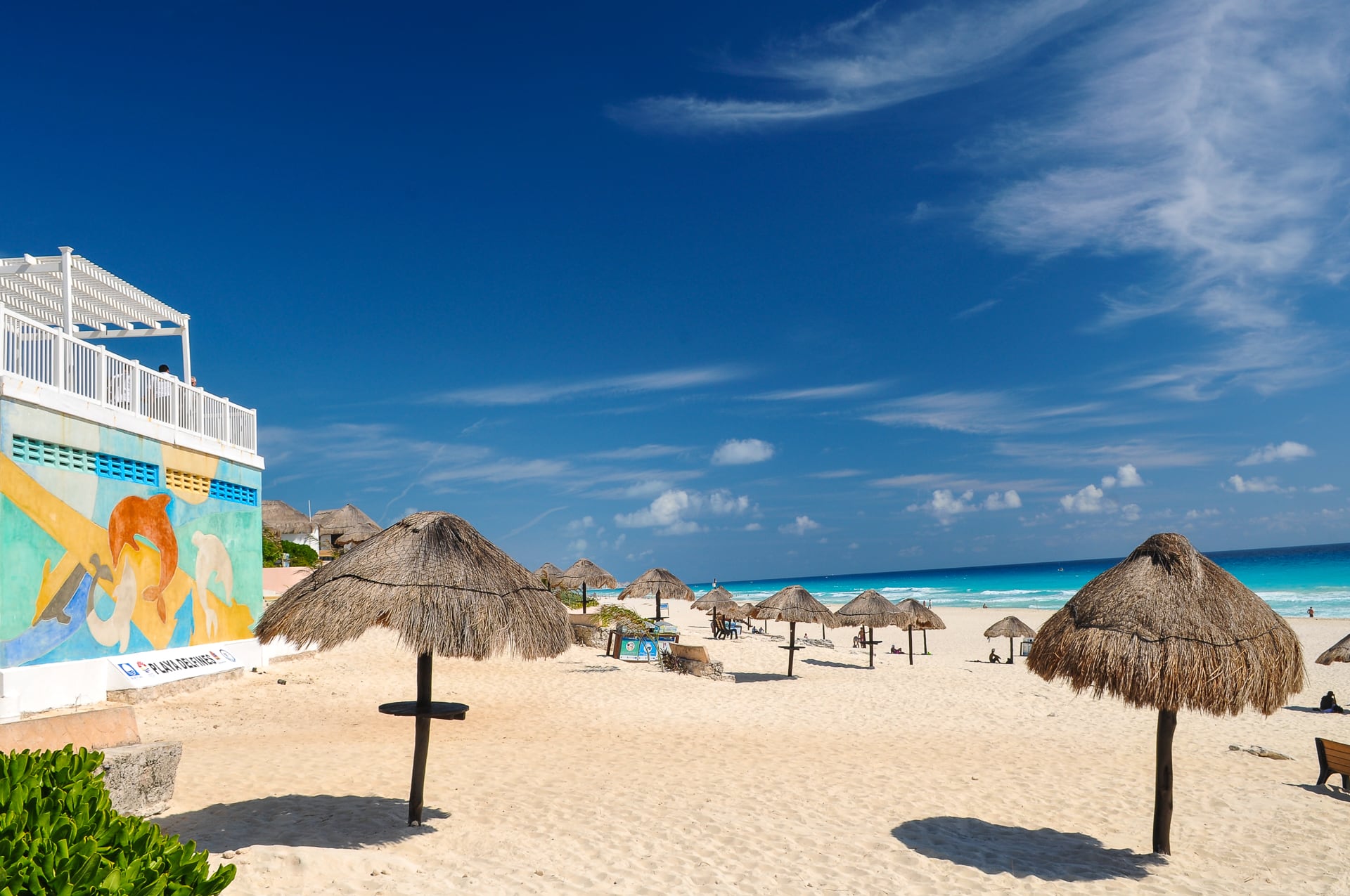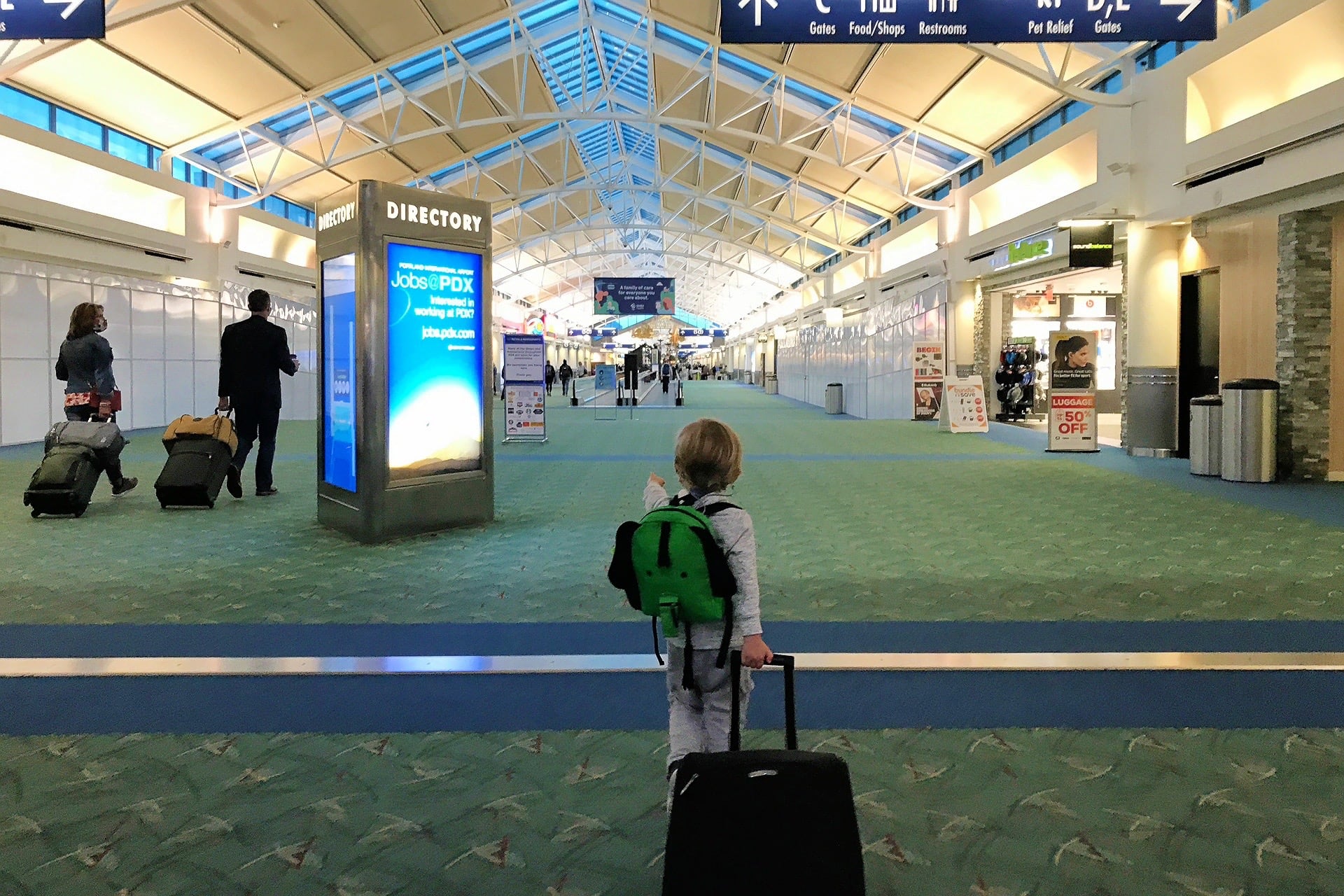It’s hard to believe we’ve been thinking about this day for seven months, ever since we returned to La Paz from our Baja-USA road trip last August. We weren’t quite sure where we’d cross, when, or with what type of vehicle, but here we are.
It’s always great to be back in Mexico. It feels particularly good this time knowing that a big part of our initial goal for this year has been met: To find a suitable home on wheels and head south of the border. Whatever happens from here on out, we’ve made it this far.
Sure, we’ve got some kinks to iron out still, which are bound to crop up with a family of four living in a tiny space. But we knew there would be a learning curve and the whole experience would be an iterative process, so no surprises there.
Being back in Mexico means we get to shift into a lower gear and settle into some sort of a routine—at least to the extent that a nomadic life (and our curiosity and wanderlust) allow.

The physical act of crossing the Nogales border and getting everything sorted with an RV was fairly easy for us. But we’ve got several things on our side including Temporary Residency (FM3 Green Cards), Spanish fluency (Lori and the kids) and competency (me…), not to mention we’ve been living (and driving) in Mexico for the past few years.
Even with all of that, it would have been a nightmare to do what we did this morning without having read up on this crossing in advance and getting some good advice from a couple who had recently done it themselves.
I’ll save you all the riveting details in this post. But I hope to put together a guide (or trip report at the very least) in the future for anyone planning to do this in the future.

We used the slick Mariposa truck & RV border crossing to get our oversized vehicle across without getting stuck in one of the gates. Then made a stop at Kilometer 21 to complete the formalities.
The boys’ favorite part about the immigration office was seeing the long freight trains lumber by a stone’s throw from the parking lot. In Baja and Nayarit, there aren’t a lot of trains coming through (if any). So this was a treat.
Twenty minutes later, we had our 10-year Temporary Import Permit (TIP) for the RV and were good to keep heading south. You don’t need a TIP if you’re just visiting Sonora, but you do if you plan to head south to Sinaloa and beyond (which is what we’re planning to do).

From here, we had planned to make the 4-5 hour drive down to San Carlos, our intended destination for a while. But the winds were so fierce (blowing 20 mph with gusts over 30 mph) that we made a last minute decision to cut today’s drive short and aim for the small town of Santa Ana. Calmer winds are forecast for tomorrow.
An hour later under threatening skies, we rolled into Santa Ana.


Some weird system had rolled in blanketing the entire region from Tucson south into Sonora. The same couple who gave us crossing tips were now hunkered down in Tucson getting rained on. It’s not exactly rainy season in the region, so this came as a surprise. It appeared we made it out just in time.
Luckily, Santa Ana has a nice little RV park right off of the main highway (Punta Vista RV Park). It’s a small place with a handful of spots and full hookups (but only 15 amp power). They recently spent a good bit of money upgrading the common space as well.

I knew this day was coming and thought that I was prepared, but I don’t think I could have prepared myself for the horrors of some of the pedestal setups south of the border. Fortunately, got a few good pieces of advice from the owner of the RV lot we bought our rig from who’s spent a number of years RVing in Mexico.
The first is, test out the electrical AND water and sewage at the pedestal FIRST before going through the trouble of leveling and setting up the rest of the RV.
The first electrical outlet I tried fell apart in my hands (never a good sign) and the second simply didn’t work. Good advice.
The third outlet was a bit closer to the only other RV in the place, but it worked (though it too also started to fall apart).
Some of the other advice he had for us was to get what’s called a Dogbone (30 amp to 15 amp step down adapter), and a good surge protector. Or, if you’re willing to pay for it, an electrical management system.
Lori and I are already intimately familiar with how shady wiring and outlets can be in Mexico, so we opted for the latter. I picked the Hughes Watchdog EPO (EMS) because it will automatically cut off power to the RV if certain basic requirements aren’t met (like dangerously high or low voltage, short circuit, surge, etc.).
The “pedestal” in this case was nothing more than an indoor 15 amp outlet bolted to a metal rail. With a chance of rain in the forecast (and the fact that I couldn’t get the dogbone connection to stay in the melted socket on its own), I grabbed some bungees and got creative. Here’s the result.


Generally, we’d like to be hooked up to 30-amp service (30 and 50 are the standard in the U.S.), but 15-amp will do for one night, given that it’s not hot enough to need to use our A/C. But 15-amp will start to become a problem as we get farther south and closer to summer.
With that sorted, it was time for some lunch. And there just happened to be an excellent taqueria next door. And not only that, they were serving up tender carne asada. Now, we’re definitely back in Mexico. The boys were in heaven.



It was next to impossible to get a photo with all of us with the wind blowing as hard as it was. This was our best effort.


After lunch, Noe read his favorite Spanish-English picture dictionary while Riley worked on finishing up his requirements for becoming a Junior Ranger. He’s very proud.

This is something new to me: A 24-hour Drive Thru Chilaquiles stand. Now, I’ve seen it all.

Sadly, the 24-hour Chilaquiles drive-thru was closed for the day.
The clouds began to part and the wind finally died down, so it seemed a walk around town was order. We made our way down to the central plaza and Santa Ana’s main church, which is pretty impressive for a town of 11,000 people.






When we returned, we noticed a large Class A had rolled in while we were gone. I enjoyed watching them also get creative with the various electrical outlets and spigots at their disposal.
Santa Ana’s certainly not a bad place to spend a few days, but we’re itching to get ourselves back to the beach.
Tomorrow, we head to San Carlos and the Sea of Cortez.




